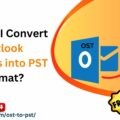This is a guest contribution from author Eileen Goudge.
There’s no such term as “blog phobia” as far as I know, but the condition is very real, I assure you. I know authors who quake at the mention of blogging, as I once did before I got a handle on it. My professional writing career began in an era when authors were expected to do only one thing: write a kickass book. And maybe go on tour if there was a marketing budget for said book. My first novel, Garden of Lies, was a New York Times bestseller and my publisher sent me on a cross-country tour that was a blur of TV appearances, print and radio interviews, and book signings.
All of which seems like a dream, looking back.
Flash forward to present day. In traditional publishing, marketing and publicity budgets for all but a handful of top tier authors are practically nonexistent. For indie authors it’s DIY all the way. This puts enormous pressure on the author to produce more than just the requisite book a year. We not only have to write the books, we have to spread the word in a crowded market when we have something to offer. Mainly this is done through blogging and social media, which go hand in hand. Back when I was a Luddite and proud of it, I would reason that I didn’t have time for all that nonsense. Also, it goes against our nature. We writers tend to be loners. Who else would spend most of his or her waking hours holed up alone, toiling away? Finally I wised up and got with the program. I realized if you don’t make the time, you might as well not bother writing the book in the first place. Few people will read it because they won’t know it’s there.
“To blog or not to blog,” is no longer the question. It’s a matter of how often and how best to target your audience. A blog is an essential tool in every author’s tool kit. It’s the best way I know to introduce new readers to your unique voice and engage with existing fans so they don’t forget about you or think you died. So you find the time, even if you have to pull it out of thin air.
The challenge then becomes getting those all-important views and click-throughs.
Not long ago, I read a blog post by an author who compared her site when she first started out to a “dusty billboard on a back-roads highway.” Traffic was so thin, why bother? she bemoaned. Her posts became more and more infrequent and traffic to her site dwindled further, a vicious cycle that had her feeling utterly defeated. I know the feeling! I used to think it was enough just to throw a blog post into the Vast Unknown and simply hope for the best. Search Engine Optimization? I didn’t know what it meant much less what it could do for me. I still wonder sometimes if the time and effort I put into blogging is worth it, given that I don’t have millions of subscribers and I’m competing with a gazillion other author-bloggers. Then I tell myself, “One step at a time. Rome wasn’t built in a day.”
My own page stats were downright embarrassing when I first started blogging. So I read up on what other, more successful bloggers had to say on the subject. I consulted with marketing experts. I learned some tricks that helped increase traffic to my site and learned a little about creating keyword-rich content, inbound and outbound links and search engines. My blog still isn’t where I’d like it to be, but at least it’s no longer a “dusty billboard on a back-roads highway.”
Here are my top 5 tips to developing a successful author blog:
Direct traffic to your site by making it a fun destination
As the author with the “dusty billboard on a back-roads highway” learned, you can’t expect to see much traffic to your site if a) people don’t know it’s there or b) it’s a snooze-fest. She solved her dilemma on both counts by making it fun for herself. She’s a history buff and she wrote historical novels, so she started doing blog posts about cool historical stuff along the lines of “Did you know…?” She built a following by reaching out to other history geeks and playing to her audience. And her specialized or themed posts also helped people more easily discover her site when searching for related keywords in Google.
For me the ticket was to write about my life experiences, which are the stuff of my novels. I come from a big, contentious Irish Catholic family in which addiction runs rampant. I was a single mom, on welfare at one point. I’ve been divorced a few times. I found my “Prince Charming,” and present husband, Sandy Kenyon, while on book tour, fittingly enough, when he interviewed me on the radio talk show he hosted at the time. My son, Michael, is schizoaffective. The list goes on and on. If I had to sum up my life in a sentence it would be, “Never a dull moment.” From the comments I’ve gotten on my blog confidentials, it would seem viewers respond to candor, even when it portrays you in a less than flattering light or reveals a skeleton in the closet. The more approachable you seem, the more followers you’ll attract, which leads to more clicks of those all-important “buy” buttons.
Come up with provocative blog headings
You have all of a nanosecond to grab someone’s interest. Use it wisely. Ann R. Allen, in her successful blog, named by Writer’s Digest as one of the top 101 most influential blogs, uses “Is Your Office Cubicle Haunted?” as one example of a provocative blog heading that poses a question. Providing answers is another way to go. “Spend Ten Minutes Doing This Every Day And You Could Transform Your Blogging” is the title of a recent post on this site. That is definitely one I want to read!
The heading of my most recent blog post is “The Nitty Gritty on Beach Reads, in which I tell of the life-altering, real-life stories behind my women’s fiction novels that are often billed as “beach reads.” I got close to a thousand Facebook views and a flurry of retweets on that one. I think the title had something to do with it.
Choose headings with social media in mind. I was recently hooked by the heading of a post written by bestselling author Claire Cook for the popular Jane Friedman site. “Why I Left My Mighty Agency and New York Publishers (for now),” not only sparked my interest, it generated over a hundred comments and a gazillion retweets as well as posts on Google Plus and Facebook.
Don’t neglect to add links
I used to think—naively—that since any information relevant to my books was easily obtainable on my website, two or three clicks away, why bother adding links to my blog posts? Well, guess what? Two clicks is one too many for the majority of people reading your blog. In today’s digital-driven world I’m amazed by the number of authors whose blog posts contain not one single link, much less a buy button or clickable book cover image! Why bother if you don’t make it easy—as in a single mouse click—for a potential customer to sample your wares? Be sure to include the link to your website, and whenever you mention a particular title, link to that title’s book page on your site or, better yet, directly to a retailer page. I also recommend incorporating outbound links and linking to the sites of other authors mentioned in your blog post. The same goes for major products, places, or attractions related to your subject matter. I find that this is helpful for my readers and easily provides them with a richer experience when reading my story.
Keep it fast-paced
Studies show the average blog viewer tends to skim rather than read every word. A snappy hook, short sentences, short paragraphs, bullets, and images are your best defense against short attention spans. Luckily I learned this early on in my career when I wrote for tabloids (anything for a buck!). If I didn’t keep it short and punchy, I didn’t make the sale. This doesn’t mean you can’t write a lengthy post. As long as it’s engaging and easy to understand (as in not wordy or too many big words) it will hold the reader’s interest.
Comment on other blogs and offer to do guest blog posts
I’m not ashamed to admit it: I’m a mere piker compared to veteran bloggers like Anne R. Allen, Jane Friedman, and my friend and fellow author, Julie Valerie. They have huge subscriber lists that dwarf my own. And rightfully so—they offer good content, and I always learn something from reading their posts. I make a habit of always commenting on the blogs I follow. Oftentimes this sparks a dialogue. The blogger remembers and appreciates your participation, and some of his or her fans may trickle over to your site. Once I get to know a blogger, I offer to do a guest blog post. Usually they take me up on it. Content is king, and when the burden is on the blogger to keep up a steady supply, it’s nice to take a break once in a while.
These are just a few basic guidelines. If you’re smart you won’t make the same mistake I did, which was to blunder through initially without doing my homework. Better to learn from other people’s mistakes. (Lucky for you there’s a ton of information on the Internet on how to do it right.) Pay attention. Revisit the resources here on Problogger, such as this useful round-up of tips and tutorials for beginners 7 Strategies for Growing Community on Your Blog. Bone up on the use of SEO keywords and the like. Be smart. Don’t be a dusty billboard on a back-roads highway. Be the neon sign that beckons from the four-lane freeway.
New York Times bestselling novelist Eileen Goudge wrote her first mystery, Secret of the Mossy Cave, at he age of eleven, and went on to pen the perennially popular Garden of Lies, which was published in 22 languages around the world, and numerous other women’s fiction tiles. Bones and Roses is the first book in her Cypress Bay Mysteries series. She lives in New York City with her husband, television film critic and entertainment reporter Sandy Kenyon. Keep connected with Eileen at her website, www.eileengoudge.com.
Originally at: Blog Tips at ProBlogger
5 Tips From a Bestselling Author (and Former Luddite) on Overcoming Blog Phobia
























No Comments